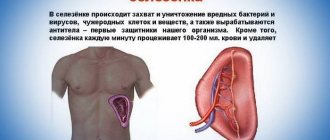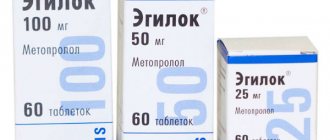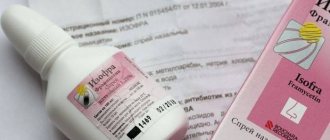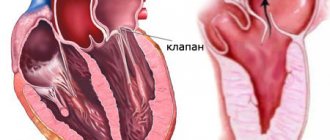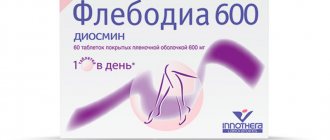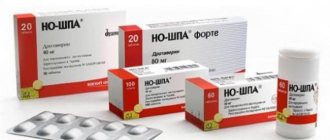The drug "Warfarin" can be found in the medicine cabinet of many people over 45 years of age. And all because diseases of the cardiovascular system still lead in morbidity and mortality of the population. Therapists, cardiologists, vascular surgeons, and neurologists often prescribe this drug because it is the most affordable in its category. Warfarin is a fairly strong medicine, and getting an overdose is not that difficult, especially if the patient is self-medicating.
“Warfarin” is well known to many, but not everyone knows how it works. What kind of drug is this? What benefits and harms can Warfarin have for humans? How to determine a drug overdose and what first aid to provide to the victim? It is advisable for everyone to know the answers to these questions, because forewarned is forearmed.
How much Warfarin is needed for an overdose?
The drug is taken 1 time per day at the same time. The standard daily dose of Warfarin (outpatient) at the time of initiation of therapy is 2.5–7.5 mg. Subsequently, under the control of the INR, the dose is adjusted until a stable therapeutic effect is achieved.
A dose of the drug of 20–30 mg/day is highly likely to cause overdose symptoms, although talking about a specific amount of the substance in this case is not entirely correct: in some patients, manifestations of overdose develop when taking a standard maintenance dose, and some patients receive a shock dose without any complications dose. An important role in this case is played by individual sensitivity to the drug.
A possible overdose is monitored by changes in the INR and characteristic clinical manifestations: if the indicator is more than 5, the dose is adjusted, if more than 9, the drug is discontinued.
Indications for use
All conditions that are accompanied by an increased risk of blood clots forming inside blood vessels are an indication for the prescription of anticoagulants. When a blood clot forms in an artery, blood flow is disrupted, ischemia and subsequent tissue necrosis occur. Venous thrombosis interferes with the outflow of blood, leading to swelling and trophic disorders.
We recommend reading the article about why thrombophlebitis occurs after surgery and how to avoid it. From it you will learn what venous thromboembolism is, what its risk factors are, clinical manifestations, as well as the diagnosis and prevention of this disease.
And here is more information about the modern diagnosis of thrombophlebitis.
Your doctor may prescribe Warfarin to prevent or treat:
- atrial fibrillation;
- damage to the valvular apparatus of the heart;
- patients with artificial valves, shunts or stents;
- acute thrombosis of the venous network;
- blockage of the pulmonary artery by a thrombus;
- formation of a blood clot in the peripheral arteries, coronary vessels or brain;
- thrombosis after surgery;
- myocardial infarction, including to prevent recurrence;
- congenital thrombophilia (blood thickening);
- unstable angina;
- transient cerebrovascular accidents, ischemic stroke.
Signs of overdose
The main sign of an overdose of Warfarin is increased bleeding, manifested in the occurrence of bleeding, both obvious and hidden. Patients taking the drug should pay attention to the appearance of certain signs that may directly or indirectly indicate a complication that has developed.
Indirect signs of warfarin overdose:
- bleeding gums when brushing teeth or eating solid foods;
- spontaneous nosebleeds;
- the appearance of small hematomas not associated with previous trauma;
- prolonged bleeding from wounds, even minor ones, that does not correspond to the degree of damage;
- in women, menstrual flow is heavier and longer than usual.
Clear signs of overdose (require immediate medical attention):
- black, tarry stools (melena) or coffee-ground vomit;
- coloration of urine - from pink to intense red;
- excessive bleeding from the nose or gums;
- in women – prolonged heavy menstruation, intermenstrual bleeding;
- cough with streaks of blood in the sputum;
- a sharp decrease in blood pressure, tachycardia, palpitations, shortness of breath;
- bleeding from minor wounds and cuts lasting more than 10 minutes;
- dizziness, severe headache, difficulty speaking, noise, ringing in the ears;
- visual impairment (double vision, flickering “spots” before the eyes, decreased visual acuity);
- sudden coldness of the extremities, numbness, feeling of goosebumps crawling on the skin, limitation of movements in the extremities;
- loss of coordination, unsteadiness of gait;
- sudden intense pain in the abdominal or chest cavity;
- extensive hematomas, areas of swelling that appear without connection with traumatic effects;
- massive swelling of the lower extremities.
Source: depositphotos.com
Contraindications
Warfarin is not prescribed in case of individual high sensitivity to the components, pregnancy, as well as in the following diseases:
- severe liver pathology;
- insufficiency of the filtering function of the kidneys;
- low blood platelet count;
- intravascular coagulation (DIC syndrome);
- increased risk of bleeding;
- dilation of the esophageal veins;
- vessel aneurysm;
- peptic ulcer;
- wounds, injuries, postoperative wounds;
- endocarditis due to bacterial infection;
- hypertension with a malignant course and poor response to medications;
- suspected cerebral hemorrhage, hemorrhagic stroke.
When is medical attention required?
Medical attention is needed if:
- a pregnant woman, an elderly person, a child were injured;
- there are clear signs of external or internal bleeding;
- suddenly my health suddenly deteriorated.
Depending on the severity of the condition, assistance is provided on the spot or hospitalization is carried out in a specialized department of the hospital, where treatment continues:
- stop taking the drug until the target INR level is reached, if necessary, replace Warfarin with low molecular weight heparin;
- transfusion of prothrombin complex factor concentrates, fresh frozen plasma or whole blood;
- administration of vitamin K in a dose of 5–10 mg by slow intravenous infusion, if necessary, repeated administration after 12 hours;
- treatment of developed complications.
Warfarin - side effects
Warfarin
is an indirect anticoagulant, which is a derivative of coumarin. The drug inhibits the synthesis of vitamin K-dependent blood clotting factors in the liver. The concentration of these substances decreases and, accordingly, blood clotting slows down. The dosage when taking Warfarin must be very precise. In addition, patients taking this medication require regular blood tests to determine the INR (a blood measure that measures how well it clots). An overdose or improper use of Warfarin can cause internal bleeding and other side effects of varying severity, including death.
Side effects of Warfarin
While taking the drug, the following may occur:
- Bleeding is a fairly common side effect when using Warfarin. In a mild form, it may be limited to bleeding gums or the formation of small hematomas on the skin. In rare cases, anemia and local skin necrosis due to thrombosis may occur. Internal, and especially life-threatening intracranial bleeding when taking Warfarin dosages occurs in approximately 1 in 10,000 cases, and is most often associated with the presence of arterial hypertension and some other concomitant diseases.
- From the digestive system, nausea, diarrhea, vomiting, and abdominal pain may occur. In rare cases, the development of jaundice.
- On the part of the nervous system, in rare cases, increased fatigue, headaches, dizziness, and taste disturbances may be observed.
- In extremely rare cases, with long-term therapy with Warfarin, complications from the respiratory system are observed: tracheal or tracheobronchial calcification.
- In case of individual hypersensitivity or intolerance to the drug, skin rash, itching, dermatitis, vasculitis, alopecia (hair loss) may occur.
Warfarin overdose
The dose of the drug effective for treatment is on the verge of bleeding, which is why monitoring the INR and compliance with the prescribed dosages during treatment with Warfarin plays such an important role. For minor bleeding, the drug is usually skipped or the dose is reduced. In case of overdose associated with the development of severe bleeding, intravenous administration of vitamin K (neutralizing the effect of Warfarin), as well as fresh frozen blood plasma or coagulation factor concentrates, is used.
Monitoring INR while taking Warfarin
INR is the international normalized ratio, an indicator of blood clotting, which is calculated based on the prothrombin index. The lower this indicator, the thicker the blood and the greater the risk of blood clots. A high INR indicates a risk of bleeding. At the initial stage, when selecting the required dosage of the drug, the indicator is measured daily. In the future, it is recommended to carry out the analysis once a week, and if 3-4 measurements remain within the acceptable range, the frequency of the INR analysis can be reduced to once every 2 weeks. Additional analysis for INR is required in case of changes in diet, stress, and other factors that may affect the indicator.
Diet while taking Warfarin
Food containing large amounts of vitamin K may reduce the effectiveness of the drug. A large amount of this vitamin is contained in fresh greens, so during treatment you should not overuse foods such as:
- avocado;
- cabbage;
- onion;
- cilantro;
- parsley;
- cucumbers (it is advisable to peel them, since the vitamin is contained mainly in the peel), chicory;
- mint;
- kiwi;
- salad;
- olive oil;
- peas;
- soy;
- pistachios;
- red seaweed;
- spinach.
Warfarin and alcohol
Alcohol enhances the anticoagulant effect of Warfarin and, as a result, unstoppable bleeding may occur even with minor household injuries. Taking a large dose of alcohol together with Warfarin is fraught with the development of severe internal bleeding, primarily gastric, which is life-threatening.
Use during pregnancy and breastfeeding
Prescribing Warfarin to pregnant women is prohibited. This is due to the fact that it can cause underdevelopment of nasal cartilage, atrophy of the optic nerve, clouding of the lens with partial or complete blindness. In children whose mothers took the drug during pregnancy, mental retardation, small brain size, and severe delay in physical development were noted. This is especially dangerous between 6 and 13 weeks.
Excretion in milk during lactation was detected only in trace amounts; in infants, the activity of the coagulation system does not change, so Warfarin can be recommended for nursing mothers if indicated .
Other situations
Are there any restrictions when using the drug to treat elderly patients? According to the instructions for the medication, in this case there is no need to reduce the dosage of the active substance. However, patients over 65 years of age taking Warfarin should be closely monitored by specialists, as they are at increased risk of developing side effects.
What about patients who suffer from various serious liver disorders? They also do not need to lower their dosage. However, treatment should be carried out under careful monitoring of INR levels.
Regular testing is also necessary for people suffering from various kidney dysfunctions. However, in this case it is also recommended to reduce the dosage of the active substance of the drug. An individual treatment regimen should be prescribed by the attending physician.
What should you do if a person who regularly takes Warfarin needs surgery? In such cases, it is recommended to stop taking the drug several days before surgery. When to do this? Everything will depend on the INR indicators:
- If the level of the analysis we are interested in is more than four units, then the anticoagulant is stopped five days before the operation.
- If INR values vary between three and four, then it is best to stop taking the medication three days before the procedure.
- If the level of analysis we are interested in fluctuates between 2 and 3, then the doctor will recommend stopping taking pills two days before surgery.
It is also necessary to conduct a blood test on the eve of surgery. If the INR level is greater than 1.8, then the patient should take 0.5 or 1 milligram of vitamin K1 (the dosage is determined by the attending physician). The drug can be administered intravenously or taken orally.
If a person is at risk of developing thrombosis, then low molecular weight heparin must be administered for preventive purposes. This should be done on the day of surgery. In some cases, doctors recommend continued administration of low molecular weight heparin for five to seven days after surgery.
You can resume taking Warfarin a few hours after a minor operation. If the surgical intervention was more serious, then anticoagulant treatment should be resumed as soon as the patient begins to receive enteral nutrition.
Pharmacokinetics
After oral administration, warfarin is rapidly absorbed from the gastrointestinal tract. It is also absorbed through the skin.
Plasma protein binding is high. Penetrates through the placenta. Excreted in small quantities into breast milk.
The active substance warfarin is a racemic mixture of isomers that are metabolized in the liver. The S-isomer is more active and is metabolized faster than the R-isomer. Metabolism occurs with the participation of isoenzymes of the cytochrome P450 system - 2C9, 2C19, 2C8, 2C18, 1A2 and 3A4, 2C9.
T1/2 averages 40 hours, in the terminal phase - approximately 1 week. The clearance of the R-isomer is usually half the clearance of the S-isomer; at similar Vd values, T1/2 of the R-isomer (37-89 hours) is greater than that of the S-isomer (21-43 hours).
Radiolabeled studies have shown that after a single oral dose, about 92% of warfarin is excreted in the urine as metabolites and only a small amount is excreted unchanged.
Where can I donate blood to determine INR?
You can perform an INR test in the following ways:
- obtain a referral from your local doctor for testing in a clinic laboratory or in a private laboratory;
- carry out the test in the therapist’s office, if he has the necessary equipment;
- purchase a portable device to determine INR levels at home.
It is most convenient to perform an INR test at home, since the patient does not have to frequently visit the clinic, donate venous blood (this is what is most often used in laboratories to perform this analysis) and waste his time waiting in queues. This test requires fresh blood from a finger prick. Painless skin puncture is performed using a special automatic device (scarifier). Test strips are inserted into the measuring device, which is equipped with a display, onto which a blood sample is applied. After a short period of time, the INR indicator appears on the display. Using such a portable device is easy, simple and very convenient.
INR analysis according to WHO recommendations should be prescribed for all treatment methods that require constant monitoring of blood clotting. It most accurately reflects the state of the human blood coagulation system. This test has been approved by all leading experts in the monitoring of anticoagulant treatment and antithrombotic therapy.
The drug is sold at an affordable price. Before use, you must read the instructions; there are many contraindications.
At an appointment with a specialist
Before prescribing this medication, the doctor must write a prescription for “Warfarin” in Latin. It is with such a document, certified by a seal, that you should go to the pharmacy and purchase the medicine.
However, first you need to carefully listen to the recommendations and warnings of the treating doctor so that taking the drug does not cause harm, but benefit. Only by strictly adhering to the dosage and other specialist prescriptions can you achieve success in using this remedy to treat your ailments.
What does the recipe for “Warfarin” tablets look like in Latin? Most likely, the entry will look like this: Tab. Warfarini 0.0025. What does this mean? This recipe for “Warfarin” (in Latin) indicates the active ingredient of the drug, its release form, and dosage. Among other recommendations, the doctor will definitely write down a medication regimen.
Poisoning prevention
To prevent an overdose of such a dangerous drug, you should adhere to a number of rules:
- Use medications only as prescribed by a doctor and only in the dosage prescribed by the doctor.
- Store medications in a specially designated place, out of the reach of children and unstable people.
- Do not store rodent control poisons in the house.
- Do not use expired medications for treatment.
An overdose of warfarin can occur without any consequences, but can cause severe illness and even death. Treatment with this drug will be effective only under the supervision of a doctor with systematic monitoring of INR levels . If bleeding is observed even when the therapeutic dosage is observed, you should consult your doctor; a dose adjustment may be necessary.
Memo to patients
What are Warfarin Nycomed tablets for? We will provide reviews and recommendations from doctors and patients on this topic a little later, but for now I would like to discuss the features of this drug. We have already mentioned one of them - strict adherence to the indicated dosage, and it is necessary to focus specifically on the doctor’s recommendations, and not on the general scheme from the instructions. If this rule is not followed, then there is a high risk of bleeding of various types. And with long-term use of the drug, such a reaction must be avoided at all costs.
For many patients, Warfarin Nycomed (reviews and instructions for use can provide complete and detailed information about the drug) is prescribed for life. Therefore, it is likely that any deviation from the required concentration in the body will cause bleeding. To avoid this, it is important to follow a number of recommendations. They cannot be found in the instructions for Warfarin Nycomed (2.5 mg), but doctors usually draw up such instructions for their patients with their own hands.
First of all, every patient taking this drug must regularly undergo blood clotting tests. Typically, the first control is prescribed after three to five days of treatment, and then the doctor is guided by the results of the examination.
During long-term treatment, tablets from different manufacturers should not be used. We have already mentioned that pharmaceutical companies produce medicines with different concentrations of the active substance, and therefore you can easily harm your health.
If you are taking Warfarin Nycomed, then you can take any other medicine only with your doctor’s permission. This applies even to seemingly harmless multivitamin complexes or analgesics. Also, do not start taking any herbs without consulting a doctor.
"Warfarin Nycomed" requires a certain diet. Compliance with a diet is the key not only to effective treatment, but also to well-being if your prescription involves lifelong use of the medication.
Reviews of Warfarin Nycomed (2.5 mg) sometimes mention that doctors specifically note the need to avoid cranberry juice and alcohol. Alcohol-containing drinks are absolutely incompatible with the drug, so you should not create precedents and drink even in the smallest quantities.
If you notice any bleeding, consult a doctor immediately. Even in cases where you think it is a minor blood loss, the situation may actually be much more serious. Only the attending physician can draw conclusions about this.
Diagnosing yourself with any side effect from Warfarin Nycomed should be the reason for an immediate visit to a specialist. He will definitely prescribe a series of tests to the patient and, based on their results, adjust the daily dose. In some cases, the tablets can be replaced with others, but it is worth considering that withdrawal from the drug takes some time.
Combination with other medications
Should Warfarin be combined with other medications or not? The issue is resolved after a medical consultation.
Combination with pharmaceuticals that affect platelet counts sometimes leads to a significant risk of internal hemorrhage. These substances include Aspirin, Dipyridamole, Penicillin, Non-steroidal anti-inflammatory drugs.
Bleeding may occur when an anticoagulant and a cytochrome inhibitor are used together. Some medications and herbs can increase or decrease the effectiveness of Warfarin, so consulting a doctor before combining medications is mandatory.
It is not recommended to combine Warfarin and drugs containing St. John's wort. The effect of the medicine may decrease if you simultaneously start using foods rich in vitamin K. A lack of this vitamin and the use of a laxative lead to an increase in the beneficial effect of the medicine.
Impact of other diseases
According to the instructions for use, the absorption of the active substance can be affected by the general condition of the patient and his concomitant ailments. For example, it has been clinically proven that diseases such as fever, decompensated heart failure, hyperthyroidism, alcoholism (which provokes various liver damage) enhance the effect of warfarin sodium. On the other hand, with hypothyroidism, the effect of taking the medication may be reduced.
It should also be taken into account that renal failure or nephrotic syndrome can provoke an inadequate reaction of the body to the active substance of the drug. In this case, the effect of its use can either sharply increase or decrease sharply.
If a patient has a history of a diagnosis such as a mutation of the gene encoding the special enzyme CYP2C9, then he must be prescribed a lower dosage of the drug, since the half-life of warfarin sodium in such a person will last much longer.
If the patient suffers from protein C or S deficiency, then he should not be prescribed a loading dose of the drug. The course of treatment should begin with small doses of the active substance. This is necessary in order to avoid the possible development of skin necrosis.
There are situations when you need to quickly achieve the desired therapeutic effect. In this case, it is necessary to begin treatment with the introduction of a certain dose of heparin, and only then combine the use of this drug and Warfarin.
In rare cases, the patient may have individual resistance to warfarin sodium. Then the attending physician may consider it appropriate to increase the loading dose of the drug by five or even twenty times.
Interaction with a doctor
Remember an important rule: when contacting a doctor of any specialty, inform him that you are taking Warfarin.
Considering that Warfarin affects blood clotting, you should know in what cases you should consult a doctor:
- Falls from height
- Blows to the head
- Bloody vaginal discharge or heavy periods
- Black chair
- Dark or red urine
- Bleeding gums
- Rash or unexplained bruising on the skin
- Diarrhea
- Headaches or chest pain
- Cough, hemoptysis
Women should regularly monitor their hemoglobin levels because... Warfarin may increase blood loss during menstrual bleeding
In each of these cases, be sure to tell your doctor that you are taking Warfarin and give your latest INR value.
To whom and why is Warfarin prescribed?
"Warfarin" is an anticoagulant that is of artificial origin and has an indirect effect. Anticoagulants are drugs that reduce blood clotting. “Warfarin” is called indirect because it acts in the liver, blocking the action of vitamin K, reducing the production of clotting factors II, VII, IX and X and some proteins. Clotting factors are formed, but they do not perform their functions well.
"Warfarin" refers to drugs with a delayed duration of action - blood clotting begins to decrease only 3-5 days after the start of treatment. The maximum effect of the drug "Warfarin" develops after a week. This effect is explained by the fact that normal coagulation factors remain in the blood for some time, and then they are replaced by non-functioning ones.
"Warfarin" is prescribed for the treatment and prevention of thrombosis, thromboembolism, stroke, and inflammation of the veins. It is also indicated for people who have had a myocardial infarction and those who have a heart valve installed.
Normal dose of warfarin for adults and children
The therapeutic regimen for taking warfarin can only be prescribed by a specialized doctor - a cardiologist, therapist and other specialists. The main problem with the active use of a drug is its potential interaction with a huge range of different drugs and substances, due to specific pharmacokinetics.
Thus, antibiotics, corticosteroids, salicylates, barbiturates, antidiabetic drugs, phenytoins, clofibrates, non-steroidal anti-inflammatory substances, and so on change the intensity of the effect of warfarin on blood clotting.
Before prescribing warfarin, it is necessary to take a prothrombin time test and calculate the prothrombin index, and then regularly monitor this parameter during the main treatment. In world medical practice, the so-called international normalized index or INR is most often used for these purposes.
Possible starting dosages:
- Adults with normal body weight and INR below 1.2 - 10 milligrams of the drug per day for 3 days, after which the normalized index is changed again and the dosage is adjusted;
- Elderly with normal body weight and INR above 1.2 - 5 milligrams of warfarin for the first 3 days;
- For children with INR from 1 to 1.3, the starting dose is 0.2 milligrams per 1 kilogram of body weight. In the presence of renal pathologies - 0.2 mg/kg body weight.
Dosages in subsequent days directly depend on the dynamic change in INR as the drug is taken - if the index increases, then the dosage is proportionally reduced. In the case when the INR decreases, the therapeutic regimen is “rolled back” to the starting dose.
Analogs
There are a lot of drugs on the pharmaceutical market that regulate blood clotting. Among them are direct and indirect anticoagulants, heparins, platelet aggregation inhibitors and enzyme preparations.
Among Warfarin analogues, the following should be highlighted:
- Clopidogrel. The cost of 28 tablets is 380 rubles. The drug is intended for the prevention of atherosclerosis.
- Plavix. Similar in action to Clopidogrel. The cost of 28 tablets is 2925 rubles.
- Sinkumar. Indirect anticoagulant. The cost of 50 tablets is 470-570 rubles.
- Lopirel. The active ingredient is clopidogrel. The cost of the drug is about 1300 rubles.
There are indirect analogues of Warfarin, that is, drugs that are not anticoagulants, but have a similar effect. These are Pradaxa (10 capsules cost 700 rubles), Xarelto (28 tablets cost 3,000 rubles). INR monitoring is not required during treatment.
Xarelto is safe for patients with chronic kidney dysfunction.
Drug substitutes
Among the analogues of the drug we are interested in, Warfarin Nycomed takes first place in terms of the active component. The instructions for these tools are almost identical.
Below is a short list of Warfarin substitutes, according to their pharmacological effects:
- “Phenilin.” The active component is phenindione. The drug is available in tablets and is used to treat thrombosis, thrombophlebitis and complications caused by strokes, heart attacks, etc.
- “Sinkumar.” The active ingredient of the tablets is acenocoumarol. This anticoagulant is used for the conditions described above.
- "Paradaxa". One capsule of the drug contains dabigatran etexilate in the amount of 150 milligrams. Most often, the medication is prescribed as a prophylaxis against venous and systemic thromboembolism, as well as stroke. Can be used for atrial fibrillation.
